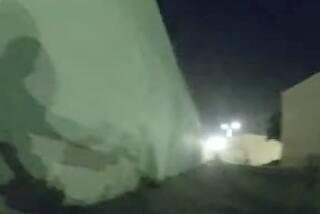HACK ATTACK : Illustrator for the Prosecution
- Share via
The accused claims he shot the victim in self-defense. The prosecution says he did it in cold blood. It was the trial of Newport Beach developer James Hood, a case so complicated that both sides needed more than good lawyers--they needed good animators.
Hood was accused of killing Bruce Beauchamp, who had been tried and acquitted on charges of killing Hood’s wife. Police say Hood had hired Beauchamp to kill his wife, then shot Beauchamp in March, 1992, to keep him quiet.
The prosecution introduced an animated video that showed Beauchamp entering Hood’s office, closing the door, then getting shot by a killer whose face is never shown. It was the first time both the defense and the prosecution had used such technology in a criminal trial, says Bryan Lavender, the San Bernardino County Sheriff’s Department research analyst who produced the prosecution video.
“Everything we showed is what hard evidence showed us actually happened,” contends Lavender, 41. “I produce a videotape based on my interviews with the expert witnesses and the physical evidence.”
The defense countered with a tape showing Hood acting in self-defense. It was produced by consultant Alexander Jason, who made the first computer-animated evidence used in a criminal trial--a tape that in February, 1992, helped convict Bay Area porn magnate Jim Mitchell of killing his partner and brother, Artie.
The Hood case ended in a mistrial last month when the jury deadlocked 10-2 to convict. A new trial is scheduled to begin in July, and Lavender expects his work to be used again.
“Explaining a complicated sequence of events like where a bullet came from or how it entered a victim’s body can take days of testimony,” he says. “If a picture is worth a thousand words, then an animated crime video is worth a thousand paragraphs.”
More to Read
Sign up for Essential California
The most important California stories and recommendations in your inbox every morning.
You may occasionally receive promotional content from the Los Angeles Times.













